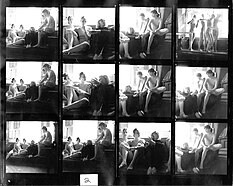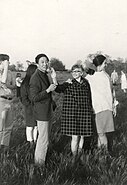
Expressive dance from German Ausdruckstanz, is a form of artistic dance in which the individual and artistic presentation of feelings is an essential part. It emerged as a counter-movement to classical ballet at the beginning of the 20th century in Europe. Traditional ballet was perceived as austere, mechanical and tightly held in fixed and conventional forms. Other designations are modern dance and free dance, expressionist dance or new artistic dance, in Anglo-American countries German dance. In 2014, modern dance with the stylistic forms and mediation forms of rhythmic and expressive dance movements was included in the German List of intangible Cultural Heritage as defined by the UNESCO Convention for the Safeguarding of Intangible Cultural Heritage. German Expressionist dance is related to Tanztheater.
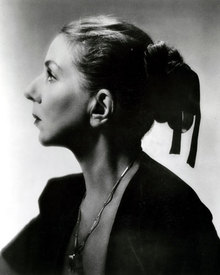
Hanya Holm is known as one of the "Big Four" founders of American modern dance. She was a dancer, choreographer, and above all, a dance educator.
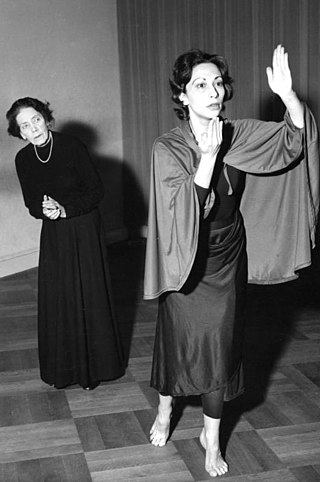
Mary Wigman was a German dancer and choreographer, notable as the pioneer of expressionist dance, dance therapy, and movement training without pointe shoes. She is considered one of the most important figures in the history of modern dance. She became one of the most iconic figures of Weimar German culture and her work was hailed for bringing the deepest of existential experiences to the stage.
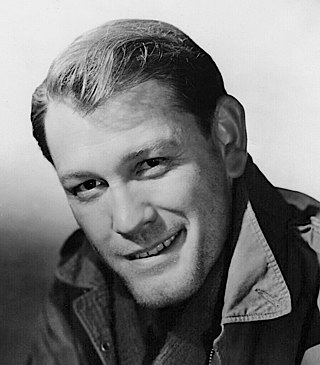
Henry Earl Holliman is an American actor, animal-rights activist, and singer known for his many character roles in films, mostly Westerns and dramas, in the 1950s and 1960s. He won a Golden Globe Award for the film The Rainmaker (1956) and portrayed Sergeant Bill Crowley on the television police drama Police Woman throughout its 1974–1978 run.
Benita Valente is an American soprano whose career has encompassed the operatic stage as well as performance of lieder, chamber music and oratorio. She is especially lauded for her interpretations of Mozart and Handel, but she also excelled in certain Verdi roles. The New York Times once referred to her as "as gifted a singer as we have today, worldwide."
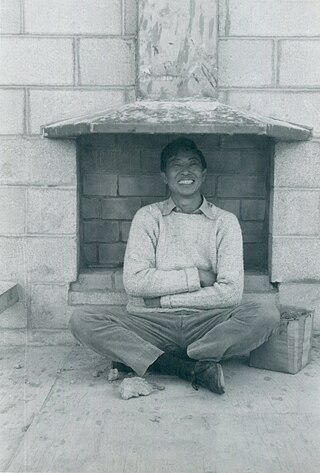
Earl Kim was an American composer, and music pedagogue. He was of Korean–descent.

Modern dance is a broad genre of western concert or theatrical dance which included dance styles such as ballet, folk, ethnic, religious, and social dancing; and primarily arose out of Europe and the United States in the late 19th and early 20th centuries. It was considered to have been developed as a rejection of, or rebellion against, classical ballet, and also a way to express social concerns like socioeconomic and cultural factors.
Events from the year 1904 in the United States.

Renate Schottelius was a German dancer and choreographer known for her work in Argentina and the USA.

King Lan Chew, also known as Qionglan Chew or Caroline B. Chew, and later as Caroline Chew Ruttle, was an American dancer. She was billed as "the only Chinese concert dancer in America" in the 1930s, when she toured North America on the chautauqua circuit.

Vera Skoronel, born Vera Laemmel, was a Swiss-born German dancer and choreographer.

Erika Thimey was a German dancer and dance educator, based for most of her career in Washington, D.C.
Louise Kloepper was an American dancer and dance educator, chair of the dance program at the University of Wisconsin.
Mimi Plumb, also known as Mimi Plumb-Chambers, is an American photographer and educator, living in Berkeley, California. Plumb is part of a long tradition of socially engaged documentary photographers concerned with California. She has published three books, Landfall (2018), The White Sky (2020), and The Golden City (2021).
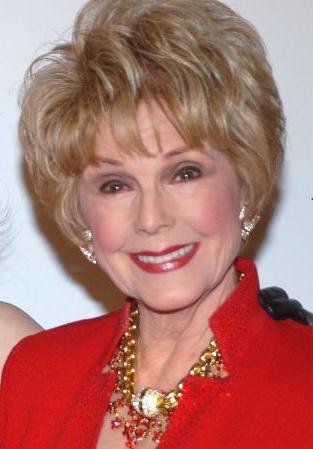
Karen Kay Sharpe is an American film and television actress. She is known for playing Laura Thomas in the American western television series Johnny Ringo.
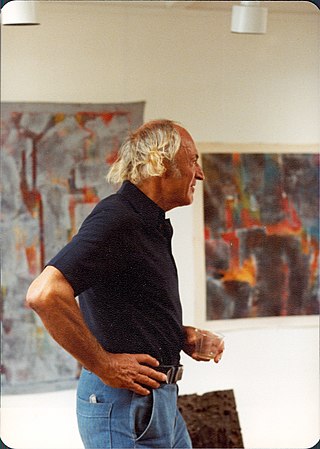
Theodore "Ted" Odza (1915–1998) was an American artist, curator, and educator, known for his sculptures and abstract paintings. He taught art classes at University of California, Berkeley, and later served as the chair of the art department of Laney College. Additionally he curated multiple national touring art exhibitions of Central European artists.
Marilyn Kagan was an American psychotherapist and actress. She was best known for her role in Adrian Lyne's 1980 film Foxes.
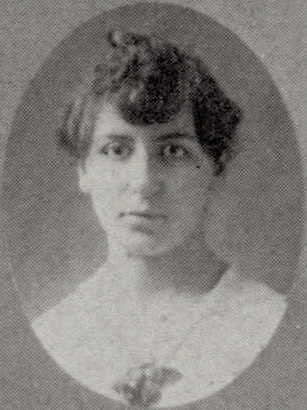
Cleo Theodora Damianakes, nom de plume Cleon or Cleonike, was an American etcher, painter, and illustrator. She was widely known for designing dust jackets for Lost Generation writers in the 1920s and early 1930s, including cover art for the first editions of Ernest Hemingway's The Sun Also Rises and A Farewell to Arms, as well as F. Scott Fitzgerald's All the Sad Young Men, which were published by Scribners. Other authors she designed covers for included novelists such as Zelda Fitzgerald, Conrad Aitken, John Galsworthy, and Arthur B. Reeve. A Greek American, Damianakes was critically acclaimed for the classical Greek influence in her etchings, and was a member of the Chicago Society of Etchers, which awarded her a medal in 1922. Her work is now part of the permanent collections of National Gallery of Art, the Art Institute of Chicago, the Smithsonian American Art Museum, and others. Married to fellow artist and book jacket designer Ralph Brooks Wilkins, she was known later in life as Cleo Wilkins.

John Fitz Madden was a career officer in the United States Army. A veteran of the U.S. response to the Garza Revolution, Spanish–American War, United States Military Government in Cuba, Philippine–American War, Pancho Villa Expedition, and World War I, he attained the rank of brigadier general and was a recipient of the French Legion of Honor (Officer) for his First World War service. Madden served in both high level staff positions, including chief quartermaster of the Pancho Villa Expedition, and important commands, including the 26th Infantry Regiment and the Hawaiian Division's 21st Infantry Brigade.

Daniel W. Hand was a career officer in the United States Army. A veteran of the Spanish–American War, Philippine–American War, Pancho Villa Expedition, and World War I, Hand attained the rank of brigadier general and was a recipient of the Army Distinguished Service Medal and Silver Star. He was best known for his command of Field Artillery units including the Department of Firing at the United States Army Field Artillery School and several Field Artillery regiments.


